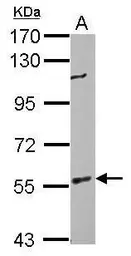BAIAP2 antibody
Cat. No. GTX115421
Cat. No. GTX115421
-
HostRabbit
-
ClonalityPolyclonal
-
IsotypeIgG
-
ApplicationsWB ICC/IF IHC-P IP
-
ReactivityHuman, Mouse, Rat



